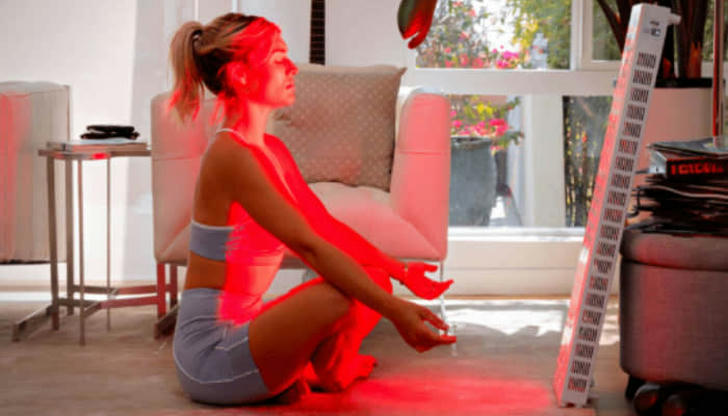How Red Light Therapy Works? Benefits, Risks and Uses

In recent years, red light therapy has emerged as a promising treatment method for various health and skincare concerns. But what exactly is red light therapy, and how does it work?
What is red light therapy?
Red light therapy, also known as low-level laser therapy (LLLT) or photobiomodulation (PBM), involves exposing the skin to low levels of red or near-infrared light. This light penetrates deep into the skin, where it stimulates cellular repair and regeneration processes.
Red light therapy benefits
Research has found that only certain wavelengths within the red light spectrum can truly provide us with the best biological effects. It works by enhancing mitochondrial function to promote the generation of high-quality collagen fibers in the skin, while also promoting blood circulation and reducing inflammation. Therefore, the cosmetic benefits of red light are undeniable.
The benefits of red light therapy are manifold and diverse, including:
• Promote wound healing
• Reduce inflammation
• Alleviate pain
• Increase circulation
• Improve skin tone and texture
• Reduce wrinkles and fine lines
• May help with hair growth
Athletes also use it to enhance muscle recovery and performance.
Red light therapy side effects and safety
Red light therapy is considered to be completely safe—as long as you make sure to wear eye protection goggles.
Unlike more invasive treatments, such as laser therapy or chemical peels, red light therapy is non-invasive and non-ablative, meaning it does not damage the skin's surface. However, some individuals may experience mild side effects such as temporary redness or irritation.
Who should avoid red light therapy?
Individuals who are pregnant, have epilepsy, have a history of skin cancer, or are currently taking photo-sensitizing medications (including tetracycline, doxycycline, hydrochlorothiazide, naproxen) should avoid red light therapy. Additionally, those with certain medical conditions or skin sensitivities should consult with a healthcare professional before undergoing red light therapy.

Does red light therapy work?
Numerous studies and clinical trials have demonstrated the effectiveness of red light therapy for various conditions. From wound healing to skincare, the evidence supporting its benefits continues to grow. While more research is needed to fully understand its mechanisms of action, many people swear by the positive results they've experienced with red light therapy.
Many users have reported that after using home red light therapy products for a month, they experienced a reduction in sunspots and age spots, a decrease in fine lines, and an improvement in the absorption of skincare products.
Can I use red light therapy at home?
Yes, one of the greatest advantages of red light therapy is its accessibility. There are now many devices available for home use, ranging from handheld devices to larger panels that can be used for full-body treatments. However, it's essential to choose a reputable device and follow the manufacturer's instructions carefully to ensure safety and effectiveness.

Tips for purchasing home red light therapy products
• Wavelength Selection: It's crucial to purchase products that emit both red light and near-infrared wavelengths. Manufacturers should provide data for both wavelengths. The ideal range for red light is between 633±5nm, while for infrared light, it's between 830±5nm. Additionally, narrower wavelength ranges are preferred for better efficacy.
• Density: The common range for density is typically between 30-60mw/cm². Generally, higher density allows for shorter exposure times for the same dosage. For example, a density of 30 might require a 10-minute exposure, whereas a density of 60 might achieve the same dosage in around 5 minutes.
• Dosage: Dosage typically falls between 9-15 joules/cm². Manufacturers often do not provide dosage data, but it can be calculated. Skin dosage (joules/cm²) = Radiation density (mw/cm²) × Exposure time (seconds) × 0.001.
• Distance: This is why it's recommended to purchase mask-style devices. Typically, the distance between the lights and the skin for these devices is between 0-3cm, a distance set by the manufacturer. Moreover, the curved design of mask-style devices conforms closely to facial contours, ensuring consistent dosage across all areas and enhancing efficacy.
• Heat Production: It's essential to ensure that the device does not produce excessive heat during use. Feeling heat could indicate an issue with the product itself. You should stop using it.
How often should you get red light therapy?
The frequency of red light therapy sessions can vary depending on the specific condition being treated and the device used. Generally, it's recommended to start with two or three times a week and gradually increase as needed. Every session can be 20 to 30 minutes.
Many people find benefits from using red light therapy daily or every other day, while others may only need treatments a few times a week to maintain results.
Conclusion Red light therapy offers a safe, effective, and convenient way to promote healing, improve skin health, and enhance overall well-being. Whether used at home or in a professional setting, it's a versatile treatment option worth exploring for anyone seeking natural and non-invasive solutions to various health and skincare concerns.
